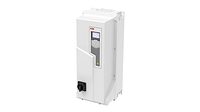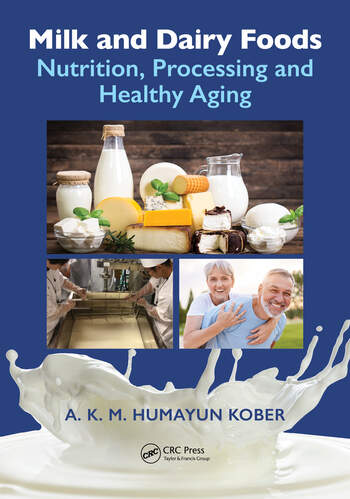Microbiological contamination in milk and dairy products such as cheese, yogurt or ice cream can have devastating consequences for consumers.
Aggressive washdown routines using caustic detergents and high-pressure rinsing are the methods of choice for risk control in production environments in dairies and milk-processing plants worldwide. The processes are very similar, regardless of conditions in the individual operations: rinsing the system, removing dirt, rinsing again; then disinfection to reduce microbiological contamination to a permissible level and rinsing again, provided the disinfectant does not have to remain on the system surfaces.
Equipment manufacturers often describe systems and equipment that can withstand this high pressure wet cleaning and caustic detergents as “washdown-capable.” However, the designation “washdown-capable” does not meet any uniform international standard. It merely reflects the internal risk assessment of the respective manufacturer and sometimes also considers industry-specific requirements. The result: From the customer's point of view, it is often difficult to compare different manufacturers’ systems.
The basics
When evaluating whether a checkweigher is suitable for washdown environments, the degree of protection of its electrical or mechanical components, the materials used in its construction and the system design of the checkweigher from a hygienic point of view (surface finish, ease of dismantling, etc.) all must be assessed.
From the purchaser's point of view, the ingress protection (IP) of electrical casings is often of particular interest. For protection against ingress of water or solids, the IP rating developed by the IEC (International Electrotechnical Commission) is certainly the best known. Rule of thumb: to ensure the washdown capability of the checkweigher, an IP66 or IP69 rating is usually sufficient. For hygienic washdown environments, IP69 is recommended. In addition to the IP rating, the NEMA rating by the National Electrical Manufacturers Association, which includes a much stronger focus on environmental hazards beyond water and dust, is also an important standard for the purchaser to weigh.
Usually, the ratings NEMA 4 (waterproof casing) and NEMA 4X (waterproof and corrosion-resistant) are recommended for washdown environments, and NEMA 4X especially for washdown processes in a hygienic production environment. Generally speaking, NEMA ratings are best used in combination with an IP rating, as the requirements of the two standards do not completely overlap. IP ratings only indicate the degree of protection against dust and water, while the NEMA ratings take into account additional factors such as corrosion resistance, material thickness, etc.
Sustainable, future-proof investment decisions for washdown-capable checkweighers should not, however, be based on ratings alone. Particular attention must be paid to the extent to which the system meets the needs of the efficient cleaning processes in dairy production facilities. Any loss of time during cleaning is synonymous with a loss of efficiency and revenue.
Systems advertised as "washdown-capable" should make the cleaning process as quick and easy as possible. For checkweighers in food production, the two standards ANSI 3A 14159-3-2019 and ISO 14159: 2008 are of particular interest. They address the design of mechanical conveyor belts for use in food production and the hygiene requirements for the design of machines in general. They set a particularly high standard, and Mettler-Toledo has identified them as the hygienic design reference for dynamic checkweighing in washdown environments.
Easily accessible components
Manufacturers, including Mettler-Toledo Product Inspection, have long been working to develop product inspection systems that can not only withstand the stresses of intensive cleaning, but also make cleaning processes as easy and efficient as possible through the design of the device itself. With checkweighers, this includes the ability to easily remove individual components such as conveyor belts for more effective and faster cleaning and belt inspections that avoid later production interruptions due to worn conveyor belts.
Therefore, the buyer should also evaluate the checkweigher’s frame construction: An open design simplifies access during cleaning to all areas of the device that potentially can be contaminated. Product residues, such as pieces of cheese or small flakes of butter, are much easier to remove with open frame construction, minimizing the risk of bacteria, mold or other contaminants accumulating unnoticed in areas that are difficult to access.
Corrosion resistance and the absence of pores in the materials used are also essential. The most practical material option is stainless steel: it is smooth, non-porous, non-reactive, non-toxic and durable. Customers should examine welds on the frame, which should be smoothed and polished to prevent dirt from building up. Inclined surfaces and rounded frame supports prevent an accumulation of liquids and/or solids in cracks or edges.
Equal care is required when evaluating the user interface. Ideally, the user interface has the same IP rating as the checkweigher, allowing it to be cleaned at the same time and in the same way. This considerably accelerates the cleaning process, as the user interface does not have to be covered or removed.
The most recent washdown-capable checkweighers that have been introduced are designed for weighing applications in a range of food production operations. They have been developed for use where cleaning processes with caustic detergents manage the risk of bacterial contamination. In addition to dairy products, this includes the processing of meat, fish and seafood. They are also recommended for baked goods and ready meal operations, where there is a risk of pastry and liquid product ingredients spilling and contaminating conveyor belts or other parts of the system that are in direct or indirect contact with food.
These systems have an IP69 rating and can withstand common caustic detergents and disinfectants according to accepted material resistance tests. The same applies to the touchscreens, which do not have to be removed or covered for cleaning purposes, thus reducing the time required for regular cleaning. These new checkweighers also meet global regulations for belt materials that are expected to come into contact with food, including regulations (EC) 1935/2004 and (EU) 10/2011. This in turn especially benefits customers in the export business in complying with FDA standards.
Keri Klein is Product Manager, Checkweighing, Mettler-Toledo Product Inspection.








